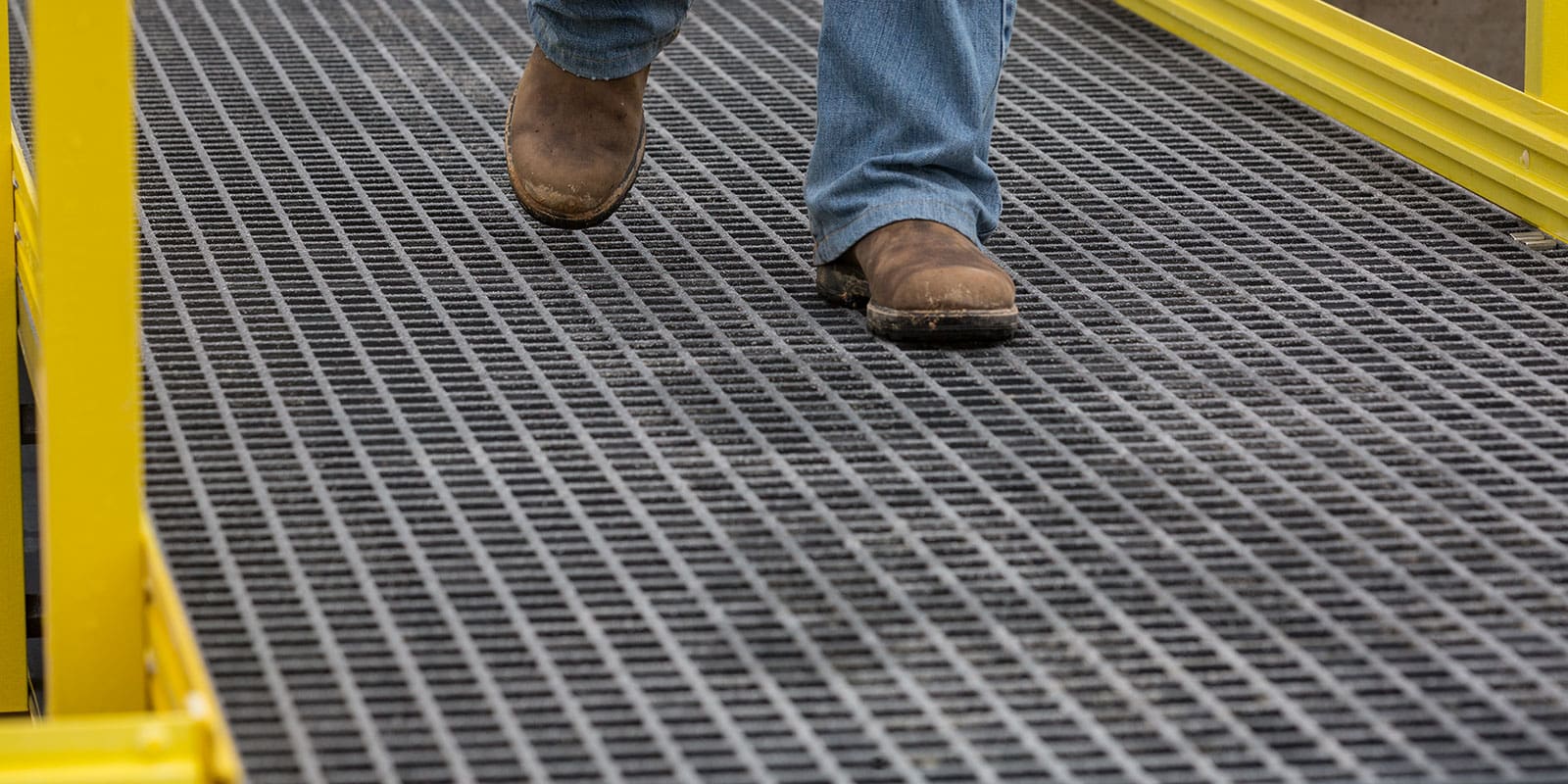When it comes to workplace safety, especially in industrial environments, the materials used can make all the difference. Surfaces, walkways, and platforms that employees use daily need to be durable, resistant to corrosion, and safe from hazards like slipping or fire. FRP grating has emerged as one of the leading materials for improving safety in workplaces, outperforming traditional materials like steel and wood.
But how exactly does FRP grating contribute to a safer working environment? Let’s explore the various ways this advanced material enhances safety and reduces risks in the workplace.
Slip Resistance: A Major Safety Advantage
One of the most significant dangers in industrial workplaces is slipping. Floors and platforms are often exposed to water, oils, chemicals, and other substances that can make surfaces slippery and hazardous. Steel or traditional metal grating, while strong, can become extremely slick in such conditions, increasing the risk of accidents.
This is where FRP grating comes in. With a textured, non-slip surface, it offers far better traction than steel or other materials. This anti-slip feature significantly reduces the chances of slips and falls, protecting workers in high-risk environments like oil rigs, chemical plants, and food processing facilities. By offering a more secure footing, FRP grating keeps employees safer on their feet, even in wet or oily conditions.
Corrosion Resistance for Long-Lasting Safety
In many industries, such as marine, chemical processing, and wastewater treatment, platforms and walkways are constantly exposed to corrosive elements. Materials like steel, when subjected to moisture, saltwater, or chemicals, begin to rust, weaken, and pose a safety hazard.
FRP grating, however, is designed to be corrosion-resistant, which means it doesn’t rust or degrade when exposed to harsh substances. Its durability ensures that the structural integrity of platforms remains intact over time, making it a safer choice for industrial environments where corrosion can lead to dangerous situations. Unlike steel, which requires regular maintenance and treatment to prevent rust, FRP grating can maintain its strength and safety features without constant upkeep.
For industries that operate in tough conditions, FRP offers a long-term safety solution that keeps employees safe and reduces the risks associated with corroded or weakened materials.
Fire Resistance and Electrical Safety
In environments where fire and electrical hazards are present, the materials used in construction can make the difference between a safe facility and a disaster waiting to happen. FRP grating comes with the option for fire-retardant properties, making it ideal for industries that must prioritize fire safety. This feature ensures that in the event of a fire, the material won’t easily ignite or contribute to the spread of flames.
Additionally, FRP grating is non-conductive, which adds another layer of safety in environments where electrical equipment is used. In industries such as electrical power plants or manufacturing facilities where live wires or equipment may be exposed, the non-conductive properties of FRP grating prevent accidental electrocution. This feature makes FRP a highly effective material for maintaining a safe workplace in areas where electrical hazards are common.
High Visibility for Safer Workspaces
Another often overlooked safety feature of FRP grating is its availability in bright, highly visible colors. This might seem minor, but in large industrial spaces with heavy machinery, workers benefit from easily identifying walkways, platforms, and hazardous areas. In dim or poorly lit environments, high-visibility grating can prevent accidents by ensuring that employees clearly see where they’re stepping.
By offering color-coded options, FRP grating can be used strategically in industrial settings to mark out different zones. For example, you might use bright yellow grating for walkways and red grating to mark dangerous areas, improving overall safety and awareness within the facility.
Low Maintenance Equals High Safety
Regular maintenance is not only costly but can also introduce safety risks if not handled properly. For materials like steel, constant maintenance is required to prevent rust, corrosion, and surface degradation. This introduces potential downtime, hazards during repairs, and higher costs over the long run.
FRP grating, however, requires little to no maintenance after installation. Its durability and resistance to environmental factors like corrosion mean it remains safe and structurally sound without frequent inspections or repairs. This translates into a safer workplace where platforms and walkways maintain their integrity over time, and workers don’t have to navigate ongoing repairs or unsafe surfaces due to material degradation.
Conclusion
Workplace safety isn’t just about following protocols—it’s about using the right materials to reduce risks and hazards in the first place. FRP grating stands out as a versatile solution for industries that demand non-slip surfaces, corrosion resistance, fire protection, and electrical safety. Its ability to enhance visibility and minimize maintenance needs further adds to its safety credentials.
When compared to traditional materials like steel, FRP grating proves to be the better option for creating safer work environments, reducing the likelihood of accidents, and providing long-term reliability.
FAQs
- How does FRP grating reduce workplace accidents? FRP grating reduces workplace accidents through its non-slip surface, corrosion resistance, and fire-retardant properties, ensuring safer platforms in hazardous environments.
- Is FRP grating safer than steel? Yes, FRP grating offers superior safety due to its corrosion resistance, slip-resistant surface, and non-conductive properties, making it safer than steel in many industrial settings.
- What industries benefit most from FRP grating? Industries like marine, chemical processing, oil and gas, and manufacturing benefit from FRP grating due to its durability and safety features in harsh environments.
- Does FRP grating require maintenance to stay safe? No, FRP grating is low-maintenance, retaining its safety features without the need for frequent repairs or treatments, unlike steel.
- Can FRP grating be used in fire-prone environments? Yes, FRP grating is available with fire-retardant properties, making it an excellent choice for environments where fire safety is critical.











